Breast Surgery FAQ
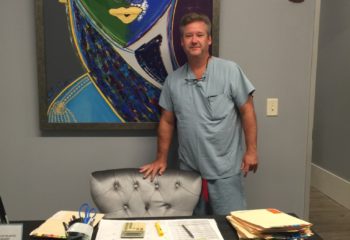
Q:
Breast Lift vs. Breast Augmentation: How do I know which I need?
A:
Charleston, SC area patients who I see in consultation for a breast lift vs. a breast augmentation typically have drooping breasts (ptosis) and/or volume loss after pregnancy (pseudoptosis) or in combination with aging. They almost always ask, “Should I get implants only, or do I need a lift?” Here is what I look for, what we discuss, and how I assess your unique measurements – so you’ll know what to expect when we meet for your breast augmentation or breast lift consultation. Implants alone will correct drooping when: – Breast drooping is mild – The nipple is still near the center of the breast and does not point downward – There is some visible skin beneath the nipple/areola when looking at the breasts straight on – You don’t mind being at least one cup size larger A breast lift is needed when: – Breast drooping is moderate to severe – The nipple is at the bottom of the breast / points downward – There is no visible skin under the nipple or areola when looking at the breasts straight on – You don’t want larger breasts – The areola is too large or you want it reduced A series of breast measurements during your consult will also help us make the decision on breast implants vs. breast lift: – If there is a long distance from the nipple and areola to the crease beneath the chest (more than 2 1/2 inches), a breast lift is often needed. – If your breasts are large and lacking in volume, a lift or reduction may be needed. Together we will review photographs of a spectrum of breast surgeries – both breast augmentations and breast lifts – to help you understand what the final result will be of either type of breast surgery. With most patients, this helps confirm the type of breast surgery they want, especially when they see how almost invisible scarring will be.
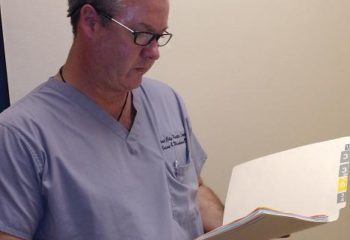
Q:
What will help me heal more quickly after breast augmentation surgery: a tight-fitting sports bra, a comfortable bra or no bra at all?
A:
(Answer from Dr. Brian G. Widenhouse MD, FACS) Your choice of bra after surgery is going to be a personal matter, and one of comfort, since there are no scientific studies showing what works and what doesn’t. I typically ask patients on the day of surgery to bring a snug but not tight-fitting elastic sports bra that opens in front. Snug, comfortable support is the goal in the early postoperative period. Fruit of the the Loom has a great, inexpensive bra we recommend that sells for under $10. After several days, you can switch to any comfortable, non-underwire bra that fits well. Keep in mind that your bra size will fluctuate as the swelling continues to resolve. It’s a good idea not to settle on a bra size or invest in an expensive bra due to your changing size for at least the first 6 weeks post surgery and to continue to avoid underwire bras.
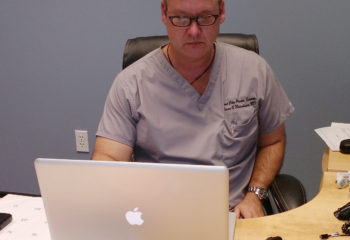
Q:
Does insurance pay for a Breast Reduction? How can I get my insurance to cover this procedure?
A:
Breast reduction patients at Port City Plastic Surgery in Charleston SC are among the most satisfied of all of our plastic surgery patients. A breast reduction can give you smaller, perkier, better shaped breasts that are more in proportion with the rest of your body. Insurance companies may cover this surgery when they deem it “medically necessary”. Persistent neck and/or back pain, shoulder grooving caused by bra straps, and rashes under the breast are the most commonly considered factors. Insurance company requirements vary, however. Schedule your breast reduction consult with Dr. Widenhouse. At your consult, if together we decide that breast reduction surgery is the answer for you, we will submit medical records and photos to your insurance provider on your behalf and request approval for your procedure. Learn more about Breast Reduction at Port City Plastic Surgery. Schedule your consult with Dr. Widenhouse today.
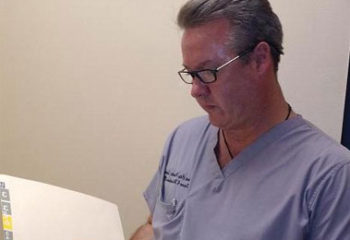
Q:
What is the recovery time for Breast Augmentation?
A:
The recovery period from breast augmentation surgery can vary, but there is a typical recovery schedule and guidelines we ask our patients to follow. First 4-5 days: No lifting small children, no strenuous housework, no physical work on the job. Those with desk jobs can return to work. You may resume driving. After 2 weeks: You may return to any cardio or activities that elevate your heart rate and blood pressure. Power walking, treadmill and other exercise that does not involve the upper body may be resumed. This break from strenuous exercise for the first 2-3 weeks helps prevent additional swelling or collection of fluid during your recovery. After 4-6 weeks: Push ups and weight lifting may be resumed. After 3-6 months: Your final results will be apparent. Of course, the above guidelines can vary widely depending on the procedure you had, how well you follow postoperative instructions, and how quickly you heal naturally. Read more on our Recovery From Breast Implants: What to Expect blog post. Schedule your consult with Charleston’s leading Breast Augmentation Plastic Surgeon, Dr. Brian G. Widenhouse, today.

Q:
Breast lift vs. breast augmentation: how can I tell which one I need?
A:
A consultation with a Board Certified Plastic Surgeon who specializes in breast augmentation and breast lifts is the most important thing you need to do to determine whether you need a breast lift or breast implants. At the exam, we can talk about your options as well as what will work best for you given your body shape and goals. There are aesthetic considerations to think about when making this decision, and anatomical considerations. You can do a “quick check” at home using what is referred to as the “pencil test.” Place a pencil under the breast (under-fold), also known as the inframammary fold. If your breasts hold the pencil, then you have sagging. If the breast does not hold the pencil and the nipple points upward, then breast augmentation should be enough to restore the breast’s volume from the effects of aging, weight loss or pregnancy. If the breast is hanging below the inframammary fold, you are probably a candidate for a breast lift. A breast lift alone may give you the results you desire, or you may still want the additional volume a breast implant can provide. For those who desire lifted and youthful, but still natural-looking breasts, we can choose a very small, unobtrusive implant. My years of experience in breast enhancement surgery help me work with my patients to create a natural, balanced, youthful look. Contact me today to schedule your consultation, where we can discuss your goals and options.

Q:
Should I choose 375cc or 400cc implants for breast augmentation?
A:
Most women considering breast enhancement surgery want a clear picture of what they will look like after surgery. Some of our Charleston, SC patients worry they are considering implants that are too large, or too small. Before and after photo galleries of other patients can help, but may not give you the full picture. As a rule of thumb, the most common implant sizes, whether silicone or saline, are 350-450ccs. But size is just one part of the equation. There are shape choices (anatomical or round) based on frame size, body type, chest wall dimension and more to take into consideration. Your own personal preferences and desired outcome are a big part of the equation, but consider that women who have a larger chest wall dimension and wider base dimension to their natural breasts are oftenwell matched with a Moderate Profile style implant (a.k.a. “teardrop” or “naturally shaped” implant). Women who are more petite to begin with will tend to look best with a higher profile implant (narrowest base, most projection). At Port City Plastic Surgery, we believe our MENTOR® Volume Sizing System provides the most accurate “after” representation available on the market today. Our satisfied patients say that far and away, our sizing system from MENTOR has allowed them to most accurately approximate their “after” picture – and they can use it quickly, simply and easily in the privacy of our offices. Our silicone sizing system is a custom-fit to your unique body size and shape, allows you to approximate the effects of gravity, and can even give you a look at how you might appear in your favorite shirts or a new bra. This innovative, clever and complete system allows you to simulate 24 different post-surgery breast volumes (from 150cc-775cc) in the privacy of our offices! Anatomic breast implants, also called teardrop-shaped breast implants, have more volume along the lower portion. Round breast implants have a uniform volume, and more projection. Due to the effects of gravity, round implants will naturally have slightly more volume along the lower portion. But round breast implants have the advantage that if they rotate post-surgery, they will maintain the same overall “look”. The term “profile” or “projection” of the implant refers to the view of the implant from the side. In other words, how far off the chest will the implants be. Breast implant manufacturers are now making breast implants with a variety of projections. For any given breast implant width, a higher profile is often available giving the implant more the projection. Of course, no visualization technique can fully predict your final result. At Port City Plastic Surgery, I evaluate each patient’s body type and frame size to help inform the best possible outcome. Call me today to set up your consult, and ask to use our MENTOR® Volume Sizing System to help you visualize your results. You’ll be glad you did!

Q:
When does swelling after breast augmentation begin to subside?
A:
Immediately after surgery, your breasts may be swollen, making them appear larger than you desired. Breast implants are also initially placed high on the chest so that they can settle into place naturally. If you have small children, for the first 4-5 days after surgery you may need help lifting your kids, doing more strenuous housework or any physical work on the job. Those with desk jobs may return to work during that first week, and can resume driving. Returning to activities that elevate your heart rate and blood pressure is possible at the 2 week point after surgery. Power walking, treadmill and other exercise that does not involve the upper body may be resumed. Taking a break from strenuous exercise for the first 2-3 weeks helps prevent additional swelling or the collection of fluid during your recovery. After the first month, push ups and weight lifting may be resumed. At this time you will notice your breasts starting to settle into their more final position as scar tissues relax and swelling subsides completely for most clients. Breasts will become softer, develop more natural movement, and most clients feel they are “part of them” as they stabilize. Keep in mind though that your body is never completely “stable” and always changing. You will continue to experience changes in the way your breasts look, especially if you experience subsequent pregnancies, weight gain, and/or menopause. By 3-6 months, most of our patients agree that their breasts were very close to the final result, with healing occurring for up to a year after your breast implant surgery. Contact me today if you are interested in discussing your goals, wishes and desires for breast augmentation surgery. Due to my many years of experience, during your consultation I can answer any questions you have about breast augmentation recovery and what to expect.
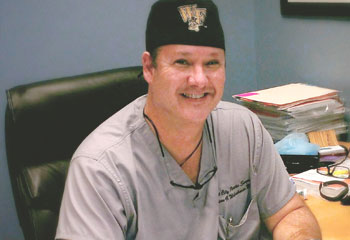
Q:
How long does it take to recover from Breast Implant surgery?
A:
Breast implant surgery is performed in our accredited ambulatory surgery facility under IV sedation. The procedure takes about an hour to an hour and a half. The recovery period from breast implant surgery can vary widely depending on the procedure you had, how well you follow postoperative instructions, and how quickly you heal naturally. Following your surgery, you will be given a prescription for pain medication and can return to normal activities within a few days. Some patients have concerns about side-effects related to the standard oral narcotic medications prescribed during the breast implant recovery period. Dr. Widenhouse takes proactive measures to help clients manage their pain in other ways, including through the use of muscle relaxants, nonsteroidal anti-inflammatory drugs (or NSAIDs), arnica and bromelain (natural alternatives shown to block pain and reduce swelling). He uses antibiotic solution and additional numbing medication in the implant pocket during the surgery. These measures are extremely effective in reducing immediate pain following surgery, and a majority of patients are able to transition to non-narcotic pain medications within 24-48 hours following surgery. We often hear from our clients that recovery was much easier than they expected. Initially, your breasts may be swollen, making them appear larger than you desired. Breast implants are also initially placed high on the chest so that they can settle into place naturally. If you have small children, for the first 4-5 days after surgery you may need help lifting them, doing more strenuous housework or any physical work on the job. Those with desk jobs may return to work during that first week, and can resume driving. Returning to activities that elevate your heart rate and blood pressure is possible at the 2 week point after surgery. Power walking, treadmill and other exercise that does not involve the upper body may be resumed. Taking a break from strenuous exercise for the first 2-3 weeks helps prevent additional swelling or the collection of fluid during your recovery. After the first month, push ups and weight lifting may be resumed. At this time you will notice your breasts starting to settle into their more final position as scar tissues relax and swelling subsides completely for most clients. Breasts will become softer, develop more natural movement, and most clients feel they are “part of them” as they stabilize. Keep in mind though that your body is never completely “stable” and always changing. You will continue to experience changes in the way your breasts look, especially if you experience subsequent pregnancies, weight gain, and/or menopause. By 3-6 months the scar will be very close to the final result, improving for up to a year after your breast implant surgery. Your final results will be apparent about six months after the surgery. Contact us today if you have questions about breast implant surgery. At your consultation, I can discuss whether you are a candidate for breast implant sugery, how long it might take you to recover, and what your options are. My years of experience as a Board Certified Plastic Surgeon mean I can help walk you through what to expect, and how to prepare for surgery in a way that best fits your goals and lifestyle.
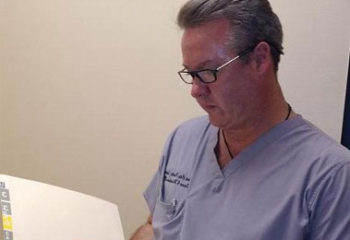
Q:
What advice do you give patients about exercise after a breast augmentation?
A:
We tell our patients that returning to activities that elevate their heart rate and blood pressure is possible at the 2 week point after breast augmentation surgery. Power walking, treadmill and other exercise that does not involve the upper body may also be resumed. Taking a break from strenuous exercise for the first 2-3 weeks helps prevent additional swelling or the collection of fluid during your recovery. Contact us today for more information about you might be a candidate for breast augmentation, and what to expect post-surgery.
LOCATION:
2683 Lake Park Drive
Charleston, SC 29406
LOCATION:
125 River Landing Drive
Suite 101
Daniel Island, SC 29492



 Reviews
Reviews Contact
Contact Gallery
Gallery Call
Call
